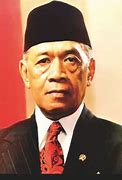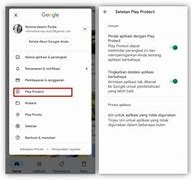
Letters Ultimately Published
Kartini's legacy is found in the many letters she wrote to friends in Holland. In 1911 a collection of her Dutch letters was published posthumously, first in Java and then in Holland as Door Duisternis tot Licht: Gedachten Over en Voor Het Javanese Volk ("From Darkness to Light: Thoughts about and on Behalf of the Javanese People"). The book was then translated into several languages, including French, Arabic, and Russian, and in 1920 was translated by Agnes Louis Symmers into English as Letters of a Javanese Princess. In 1922 Armijn Pane finally translated the book into the Javanese language under the title Habis Gelap Terbitlah Terang ("After Darkness, Light Is Born"), which he based on a verse found in both the Bible and the Qur'an in which God calls people out of the darkness and into the light. More recently, Kartini's granddaughter, Professor Haryati Soebadio, re-translated the letters and published them as Dari Gelap Menuju Cahaya, meaning "From Darkness into Light."
Kartini's letters spurred her nation's enthusiasm for nationalism and garnered sympathy abroad for the plight of Javanese women. Syrian writer Aleyech Thouk translated From Darkness into Light into Arabic for use in her country, and in her native Java Kartini's writings were used by a group trying to gain support for the country's Ethical Policy movement, which had been losing popularity. Many of Kartini's admirers established a string of "Kartini schools" across the island of Java, the schools funded through private contributions.
Kartini's beliefs and letters inspired many women and effected actual change in her native Java. Taking their example, women from other islands in the archipelago, such as Sumatra, also were inspired to push for change in their regions. The 1945 Constitution establishing the Republic of Indonesia guaranteed women the same rights as men in the areas of education, voting rights, and economy. Today, women are welcome at all levels of education and have a broad choice of careers. Kartini's contributions to Indonesian society are remembered in her hometown of Jepara at the Museum Kartini di Jepara and in Rembang, where she spent her brief married life, at the Museum Kartini di Rembang.
The Indonesian War of Independence
Directly after the declaration of Indonesian independence at 17 August 1945, Hamengkubuwono IX together with Paku Alam VIII, the Prince of Pakualaman decided to support the newly formed Republic. Hamengkubuwono IX’s support was immediately recognized by the Central Government with an appointment to the Life-Governorship of Yogyakarta with Paku Alam VIII as Vice Governor. Yogyakarta’s status was also upgraded to that of Special Region. In addition, Hamengkubuwono IX served as Yogyakarta’s Military Governor and was also Minister of the State from 1945-1949.
It was not long however, before the Dutch returned to lay claim to their former colony. Hamengkubuwono IX played a vital role in the resistance. In early 1946, the capital of Indonesia was quietly relocated to Yogyakarta, in that time the Sultan gave the new government some funds. When Indonesia first sought a diplomatic solution with the Dutch Government, Hamengkubuwono IX was part of the Indonesian delegation.
Things took a turn for the worse on 21 December 1948. That day, the Dutch successfully occupied Yogyakarta and arrested Sukarno and Hatta, Indonesia’s first President and Vice President. The Dutch didn’t dare to overthrow the Sultan however. Hamengkubuwono IX did not leave Yogyakarta and continued to serve as Governor. The Dutch viewed him with suspicion and at one stage began to entertain the idea that Hamengkubuwono IX was either planning to make Yogyakarta a completely autonomous region or setting his eyes on the leadership of the Republic.[2]
Transition from old order to new order
During the G30S Movement, in the course of which six generals were kidnapped from their homes and killed, Hamengkubuwono IX was present in Jakarta. That morning, with President Sukarno's location still uncertain, Hamengkubuwono was contacted by Suharto, who was now a major general and the commander of Kostrad (Army Strategic Command) for advice. Suharto suggested that because Sukarno's whereabouts are still unknown, Hamengkubuwono IX should form a provisional government to help counter the movement.[20] Hamengkubuwono IX rejected the offer and contacted one of Sukarno's many wives who confirmed Sukarno's whereabouts.
After Suharto had received Supersemar (Order of the Eleventh of March) in March 1966, Hamengkubuwono IX and Adam Malik joined him in a triumvirate to reverse Sukarno's policies. Hamengkubuwono IX was appointed Minister of Economics, Finance, and Industry and charged with rectifying Indonesia's Economic problems. He would hold this position until 1973. [citation needed]
Ever since Mohammad Hatta resigned as vice president in December 1956, the position had remained vacant for the rest of Sukarno's time as president. When Suharto was formally elected to the presidency in 1968 by the People's Consultative Assembly, it continued to remain vacant. Finally, in March 1973, Hamengkubuwono IX was elected as vice president alongside Suharto who had also been re-elected to a second term as president.[citation needed] He retained his post as Yogyakarta Governor during his vice-presidential tenure.
Hamengkubuwono IX's election was not a surprise as he was a popular figure in Indonesia. He was also a civilian and his election to the vice presidency was hoped to complement Suharto's military background. Despite being officially elected in 1973, it can be said that Hamengkubuwono IX had been the de facto vice president beforehand as he regularly assumed the leadership of the country whenever Suharto was out of the country.[21] As vice president, Hamengkubuwono IX was put in charge of welfare and was also given the duty of supervising economic development.[22]
It was expected that the Suharto and Hamengkubuwono IX duet would be retained for another term. However, Hamengkubuwono IX had become disillusioned with Suharto's increasing authoritarianism and the increasing corruption.[23]
These two elements were also recognized by protesters who had demanded that Suharto not stand for another term as president. These protests reached their peak in February 1978, when students of Bandung Technological Institute (ITB) published a book giving reasons as to why Suharto should not be elected president. In response, Suharto sent troops to take over the campus and issued a ban on the book. [citation needed] Hamengkubuwono could not accept Suharto's actions. In March 1978, Hamengkubuwono rejected his nomination as vice president by the People's Consultative Assembly (MPR). Suharto asked Hamengkubuwono to change his mind, but Hamengkubuwono continued to reject the offer and cited health as his reason for not accepting the nomination.[24]
Suharto took Hamengkubuwono IX's rejection personally and in his 1989 autobiography would claim credit for conceiving 1 March General Offense. [citation needed]
Hamengkubuwono IX had been active with Scouts from the days of the Dutch colonial government and continued to look after the movement once Indonesia became independent. In 1968, Hamengkubuwono IX was elected Head of the national Scout movement. Hamengkubuwono IX was also awarded the Bronze Wolf, the only distinction of the World Organization of the Scout Movement, awarded by the World Scout Committee for exceptional services to world Scouting, in 1973.[25][26]
Indonesian War of Independence
Directly after the declaration of Indonesian independence on 17 August 1945, Hamengkubuwono IX together with Paku Alam VIII, the Prince of Pakualaman decided to support the newly formed Republic. Hamengkubuwono IX's support was immediately recognized by the Central Government with an appointment to the Life-Governorship of Yogyakarta with Paku Alam VIII as vice governor. Yogyakarta's status was also upgraded to that of the Special Region. In addition, Hamengkubuwono IX served as Yogyakarta's military governor and was also minister of the state from 1945 to 1949.[citation needed]
The Dutch returned to lay claim to their former colony. Hamengkubuwono IX played a vital role in the resistance. In early 1946, the capital of Indonesia was quietly relocated to Yogyakarta, and the Sultan gave the new government some funding. When Indonesia first sought a diplomatic solution with the Dutch Government, Hamengkubuwono IX was part of the Indonesian delegation.[citation needed] On 21 December 1948, the Dutch successfully occupied Yogyakarta and arrested Sukarno and Hatta, Indonesia's first president and vice president. Hamengkubuwono IX did not leave Yogyakarta and continued to serve as governor.[citation needed] The Dutch intended to make Yogyakarta the capital of the new Indonesian federal state of Central Java and to appoint the sultan as head of state, but Hamengkubuwono refused to cooperate.[15] The Dutch viewed him with suspicion and at one stage began to entertain the idea that Hamengkubuwono IX was either planning to make Yogyakarta a completely autonomous region or setting his eyes on the leadership of the Republic.[16]
In early 1949, Hamengkubuwono IX conceived the idea of a major offensive to be launched against Yogyakarta and the Dutch troops occupying it. The purpose of this offensive was to show the world that Indonesia still existed and that it was not ready to surrender. The idea was suggested to General Sudirman, the Commander of the Indonesian Army, and received his approval. In February 1949, Hamengkubuwono IX had a meeting with then Lieutenant Colonel Suharto, the man chosen by Sudirman to be the field commander for the offensive. After this discussion, preparations were made for the offensive. This involved intensified guerilla attacks in villages and towns around Yogyakarta to make the Dutch station more troops outside of Yogyakarta and thin the numbers in the city itself. [citation needed] On 1 March 1949 at 6 am, Suharto and his troops launched the 1 March General Offensive. The offensive caught the Dutch by surprise. For his part, Hamengkubuwono IX allowed his palace to be used as a hideout for the troops. For 6 hours, the Indonesian troops had control of Yogyakarta before finally retreating. The offensive was a great success, inspiring demoralized troops all around Indonesia. On 30 June 1949, the retreating Dutch forces handed over authority over Yogyakarta to Hamengkubuwono IX.[17] On 27 December, immediately after the transfer of sovereignty was signed by Queen Juliana in Dam Palace in Amsterdam, High Commissioner A.H.J. Lovink transferred his powers to Hamengkubuwono during a ceremony in Jakarta in Koningsplein Palace, later renamed Merdeka Palace.[18]
Wrote Letters to Holland
From 1900 to 1904 Kartini stayed home from school in according to the dictates of Javanese tradition; she found an outlet for her beliefs in letters she wrote in Dutch and sent to her friends in Holland. Kartini was unique in that she was a woman who was able to write; what set her apart even further was her rebellious spirit and her determination to air concerns that no one, not even men, were publicly discussing.
Kartini wrote to her European friends about many subjects, including the plight of the Javanese citizenry and the need to improve their lot through education and progress. She recounts how Javanese intellectuals were put in their place if they dared to speak Dutch or to protest. She also describes the restrictive world she lived in, rife with hierarchy and isolationism. In 1902 Kartini wrote to one letter, to Mrs. Ovink-Soer, that she hoped to continue her education in Holland so that she could prepare for a future in which she could make such education accessible to all women.
Kartini is most known for writing letters in which she advocates the need to address women's rights and status, and to loosen the oppressive Islamic traditions that allowed discrimination against women. She protests against education restricted to males of the nobility, believing that all Javanese, male and female, rich and poor, have the right to be educated in order to choose their own destiny. Women especially are not allowed to realize their calling. As Nursyahbani Katjasungkana commented in the Jakarta Post, "Kartini knew and expounded the concept that women can make choices in any aspect of their lives, careers, and personal matters."
The 1 March General Offensive
In early 1949, Hamengkubuwono IX conceived the idea of a major offensive to be launched against Yogyakarta and the Dutch troops occupying it. The purpose of this offensive was to show to the world that Indonesia still existed and that it was not ready to surrender. Hamengkubuwono IX also thought that this would also give the idea of Indonesian independence some legitimacy in the eyes of the international community.
The idea was suggested to General Sudirman, the Commander of the Indonesian Army and received his approval. In February 1949, Hamengkubuwono IX had a meeting with then Lieutenant Colonel Suharto, the man chosen by Sudirman to be the field commander for the offensive. After this discussion, preparations were made for the offensive. This involved intensified guerilla attacks in villages and towns around Yogyakarta so as to make the Dutch station more troops outside of Yogyakarta and thin the numbers in the city itself.
On 1 March at 6 AM, Suharto and his troops launched the 1 March General Offensive. The Offensive caught the Dutch by surprise. For his part, Hamengkubuwono IX allowed his palace to be used as a hide out for the troops. For 6 hours, the Indonesian troops had control of Yogyakarta before finally retreating. The Offensive was a great success, inspiring demoralized troops all around Indonesia and most importantly, caused the United Nations to pressure the Netherlands to recognize Indonesia’s Independence.
Indonesian politician and royal (1912–1988)
Sri Sultan Hamengkubuwono IX (Hanacaraka: ꦯꦿꦶꦯꦸꦭ꧀ꦡꦟ꧀ꦲꦩꦼꦁꦑꦸꦨꦸꦮꦟ꧇꧙꧇; 12 April 1912 – 2 October 1988[a]), often abbreviated as HB IX, was an Indonesian politician and Javanese royal who was the second vice president of Indonesia, the ninth sultan of Yogyakarta, and the first governor of the Special Region of Yogyakarta. Hamengkubuwono IX was also the chairman of the first National Scout Movement Quarter and was known as the Father of the Indonesian Scouts.
Pendidikan Sri Sultan Hamengkubuwono IX
Dorodjatun menempuh pendidikan pertamanya di taman kanak-kanak Frobel School dan Eerste Europeesche Lagere School B.
Setahun setelahnya, ia pindah ke kediaman keluarga Cock dan sekolah di Neutrale Europeesche Lagere School.
Setelah lulus pada 1925, Dorodjatun melanjutkan ke sekolah menengah Hoogere Burgerschool (HBS) Semarang.
Sewaktu sekolah di HBS, ia tinggal bersama keluarga sipir penjara Semarang, Voskuil. Namun karena merasa tidak cocok dengan lingkungannya, ia pindah ke HBS Bandung pada 1928.
Di Bandung, Dorodjatun tinggal bersama tentara militer Belanda, Letkol De Boer. Namun, sebelum pendidikannya selesai, ia diminta oleh sang ayah untuk belajar ke Belanda.
Ia pun berangkat pada Maret 1930 dengan didampingi oleh keluarga Hofland, seorang direktur pabrik gula.
Baca juga: Sri Sultan Hamengkubuwono I, Pendiri Kesultanan Yogyakarta
Sesampainya di Belanda, Dorodjatun sekolah di dua lembaga yang berbeda, yakni HBS B dan Stedelijk Gymnasium.
Setelah lulus pada 1934, ia pindah ke Leiden dan masuk ke Universitas Leiden mengambil studi Indologi, yakni studi tentang administrasi kolonial, etnologi, dan kesusastraan di Hindia Belanda.
Belum sempat menyelesaikan tugas akhirnya, Dorodjatun dipanggil untuk kembali ke Indonesia pada 1939.
Promoted Nationalist Movement
Fearful of losing control over their island territory, the Dutch colonialists believed that knowledge of European languages and education could a be dangerous tool in the hands of the native Javanese. Consequently, they suppressed the activities of the native people, keeping them as peasants and plantation laborers, while at the same time counting on the Javanese nobility to support them in their rule over the region. Only a few of the nobility, Kartini's father included, were taught the Dutch language. Kartini believed that once the Europeans introduced Western culture to the island, they had no right to limit the desire of native Javanese to learn more. Clearly, by the late nineteenth century there was talk of independence. With her letters and her egalitarian fervor, Kartini can be said to have started the modern Indonesian nationalist movement.
Kartini was not proud of being set apart from her countrymen as one of the privileged few of the aristocracy. In her writings she described two types of nobility, one of mind and one of deed. Simply being born from a noble line does not make one great; a person needs to do great deeds for humanity to be considered noble.
Educated at Dutch Schools
As a child, Kartini was very active, playing and climbing trees. She earned the nickname "little bird" because of her constant flitting around. A man of some modern attitudes, her father allowed her to attend Dutch elementary school along with her brothers. The Dutch had colonized Java and established schools open only to Europeans and to sons of wealthy Javanese. Due to the advantages of her birth and her intellectual inclination, Kartini became one of the first native women allowed to learn to read and write in Dutch.
Despite her father's permission to allow her a primary education, by Islamic custom and a Javanese tradition known as pingit, all girls, including Kartini, were forced to leave school at age 12 and stay home to learn homemaking skills. At this point, Kartini would have to wait for a man to ask for her hand in marriage. Even her status among the upper class could not save her from this tradition of discrimination against women; marriage was expected of her. For Kartini, the only escape from this traditional mode of life was to become an independent woman.



